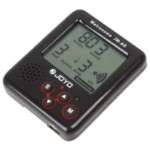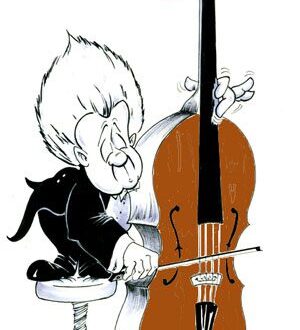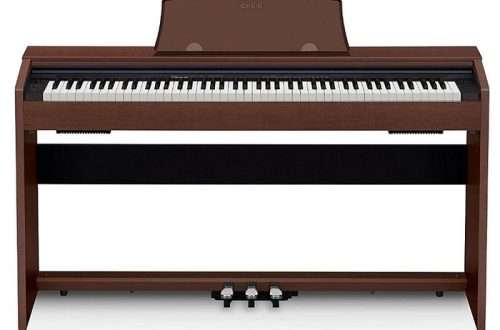Learning pieces of music on the piano: how to help yourself?
Contents
Anything can happen in life. Sometimes learning musical pieces seems like an incredibly difficult task. The reasons for this can be different – when it’s laziness, when it’s a fear of a large number of notes, and when it’s something else.
Just don’t think that it’s impossible to cope with a complex piece, it’s not that scary. After all, the complex, as the laws of logic say, consists of the simple. So the process of learning a piece for piano or balalaika needs to be divided into simple stages. This will be discussed in our article.
First, get to know the music!
Before you start learning a piece of music, you can ask the teacher to play it several times. It’s great if he agrees – after all, this is the best opportunity to get acquainted with a new piece, evaluate the complexity of its performance, tempo, and other nuances.
If you study on your own, or the teacher fundamentally does not play (there are those who advocate for the student to be independent in everything), then you also have a way out: you can find a recording of this piece and listen to it several times with the notes in your hands. However, you don’t have to do this, you can sit down and start playing right away! Nothing will be lost from you!
The next step is getting to know the text
This is the so-called analysis of a musical composition. First of all, we look at the keys, key signs and size. Otherwise, then it will be: “Oh my, I’m not playing in the right key; Yo-mayo, I’m in the wrong key.” Oh, by the way, don’t be lazy to look at the title and the name of the composer, who is modestly hiding in the corner of the sheet music. This is so, just in case: it’s still good not to just play, but to play and know that you are playing? Further acquaintance with the text is divided into three stages.
The first stage is to play with two hands in a row from start to finish.
You sat down at the instrument and want to play. Don’t be afraid to play with both hands at once from start to finish, don’t be afraid to pick at the text – nothing bad will happen if you play a piece with errors and in the wrong rhythm the first time. Another thing is important here – you must play the piece from beginning to end. This is a purely psychological moment.
Once you’ve done this, you can consider yourself halfway done. Now you know for sure that you can play and learn everything. Figuratively speaking, you have “walked around your property with the keys in your hands” and know where you have holes that need to be patched.
The second stage is “examining the text under a magnifying glass,” parsing it with separate hands.
Now it’s important to take a closer look at the details. To do this, we play separately with the right hand and separately with the left. And there is no need to laugh, gentlemen, seventh graders, even great pianists do not disdain this method, because its effectiveness has long been proven.
We look at everything and immediately pay special attention to the fingering and difficult places – where there are many notes, where there are many marks – sharps and flats, where there are long passages on the sounds of scales and arpeggios, where there is a complex rhythm. So we have created for ourselves a set of difficulties, we quickly tear them out of the general text and teach them in all possible and impossible ways. We teach well – so that the hand plays on its own, for this we do not hesitate to repeat difficult places 50 times on the fort (sometimes you need to use your brain and divide the difficult place into parts – seriously, it helps).
A few more words about fingering. Please don’t be fooled! So you think: “I’ll first learn the text with Chinese fingers, and then I’ll remember the correct fingers.” Nothing like this! With an inconvenient fingering, you will memorize the text for three months instead of one evening, and your efforts will be in vain, because it is in those places where the fingering is not thought out that blots will appear on the academic test. So, gentlemen, don’t be lazy, get familiar with the fingering instructions – then everything will be fine!
The third stage is assembling the whole from parts.
So we spent a long, long time fiddling around with analyzing the piece with separate hands, but, whatever one may say, we will have to play it with two hands at once. Therefore, after some time, we begin to connect both hands. At the same time, we monitor the synchronicity – everything must match. Just look at your hands: I press the keys here and there, and together I get some kind of chord, oh, how cool!
Yes, I especially need to say that sometimes we play at a slow tempo. The right and left hand parts need to be learned both at a slow tempo and at an original pace. It would also be a good idea to run the first connection of two hands at a slow pace. You’ll quickly get enough of playing at the concert.
What will help you learn by heart?
It would be correct to initially break the work into parts or semantic phrases: sentences, motives. The more complex the work, the smaller the parts that require detailed development. So, having learned these small parts, then putting them together into one whole is a piece of cake.
And one more point in defense of the fact that the play should be divided into parts. A well-learned text must be able to be played from anywhere. This skill often saves you at concerts and exams – no mistakes there will lead you astray, and in any case you will finish the text to the end, even if you don’t want to.
What should you be wary of?
When starting to work independently when learning a piece of music, a student can make serious mistakes. It’s not fatal, and it’s even normal, and it happens. The student’s task is to learn without errors. Therefore, when playing the entire text several times, do not turn off your head! You can’t ignore the blots. You should not get carried away with imperfect playing, since the inevitable shortcomings (not hitting the right keys, involuntary stops, rhythmic errors, etc.) can now become entrenched.
During the entire period of learning musical works, one must not lose sight of the fact that every sound, every melodic structure must serve to express the character of the work or its part. Therefore, never play mechanically. Always imagine something, or set some technical or musical tasks (for example, to make bright crescendos or diminuendos, or to make a noticeable difference in sound between forte and piano, etc.).
Stop teaching you, you know everything yourself! It’s good to hang out on the Internet, go study, otherwise a woman will come at night and bite off your fingers, pianists.
PS Learn to play like this guy in the video, and you will be happy.
F. Chopin Etude in A minor op.25 No.11
P.P.S My uncle’s name is Yevgeny Kysyn.



